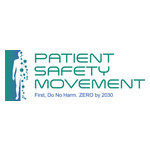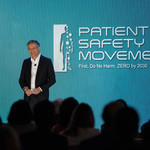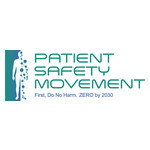On the first day of the Summit, global patient safety leaders call for increased urgency in reducing preventable deaths.
IRVINE, Calif.–(BUSINESS WIRE)–Day one of the 10th Annual World Patient Safety, Science & Technology Summit presented by the Patient Safety Movement Foundation (PSMF) saw global leaders across the world of patient safety call for an increased urgency in addressing the issue of preventable harm within healthcare.
Celebrating the PSMF’s 10th anniversary, Dr. Michael Ramsay, chief executive officer of the PSMF, reflected on the role that the increasing availability of hospital data on medical errors could play in reducing harm. “I’m very optimistic that we’re really going to see a difference in healthcare,” he said. “Technology is changing. We’re now getting real data. We know what the outcomes are in hospitals. We’re all humans, we’re all a little bit competitive, and I think you react to data. This will make a difference.”
In a keynote address, Don Berwick, MD, MPP, FRCP, former administrator of the Centers for Medicare and Medicaid Services, pointed out that one in four hospital patients experience injury as a result of their care.
“Healthcare is far too unsafe,” said Berwick. “A large proportion of patient safety problems can be eliminated. There are hospitals in this nation that have driven certain kinds of infections to zero and virtually eliminated the risk of pneumonia from ventilation machines.”
Berwick suggested that healthcare systems can learn from many of the safety practices that the aviation industry has successfully put in place. “Today, you would have to fly continuously on a commercial flight for over 6,000 years to have a 50:50 chance of being injured as a passenger,” he said. “Roughly speaking, that means you are more than two million times safer in an airplane seat than in a hospital.”
Jannicke Mellin-Olsen, former president of the World Federation of Societies of Anesthesiologists, used her keynote address to call for more healthcare systems to involve patients and family members of those who have suffered harm in order to help drive better practices. “Involvement means hearing the patient voice at every level of the service,” she said.
The first day of the Summit also featured a talk from Sir Liam Donaldson, former chief medical officer of the United Kingdom, who discussed the impact of Covid-19 on patient safety and how the pandemic illustrated the lack of resilience throughout our healthcare structures. “There wasn’t much thinking about patient safety in the pandemic planning that preceded Covid,” said Donaldson. “Failures to develop world-class infection control facilities put both health workers and patients at risk, but there was also the issue of transitions of care, which greatly affected elderly patients and led to the virus spreading through nursing homes. That should have been part of our thinking from a patient safety perspective.”
Neelam Dhingra, who heads the World Health Organization’s (WHO) Transformative Flagship Initiative, emphasized the need to improve patient safety in low- and middle-income countries. Dhingra pointed out how when WHO conducted a survey of 102 countries in 2022, just 27% had developed a national patient safety action plan, and only 18% had established national targets on reducing medication-related harm.
“In low- and middle-income countries, we are still very far from even simple procedures when it comes to patient safety,” said Dhingra. “Studies from these countries are limited, but the estimates we have suggest that every minute at least five patients die in hospital. This means that the burden of harm in healthcare is grossly underestimated.”
Konrad Reinhart, founding president of the Global Sepsis Alliance, highlighted the continuing need to improve public awareness on sepsis and push for hospitals to comply with best practices. “Given the number of sepsis deaths worldwide, which are higher than cancer, the potential to reduce harm is enormous,” he said.
There were additional talks from world-renowned patient safety champion Peter Pronovost, along with Stephanie Mercado, chief executive officer of the National Association for Healthcare Quality, and Peter Lachman who leads the PSMF’s Fellowship Program. Tedros Adhanom Ghebreyesus, director general of WHO, addressed the Summit in a prerecorded video message.
Panel discussions included contributions from members of the President’s Council of Advisors on Science and Technology regarding their upcoming report on patient safety, as well as an assessment from healthcare leaders on the potential of predictive analytics and AI to improve patient safety.
Other panels touched on subjects ranging from the need for patient and family engagement in healthcare to proposals for forming a National Patient Safety Board. The day’s program ended with a private screening of the HBO documentary Bleed Out.
ABOUT THE PATIENT SAFETY MOVEMENT FOUNDATION
In 2012, Joe Kiani founded the non-profit Patient Safety Movement Foundation (PSMF) to eliminate preventable medical errors in hospitals. His team worked with patient safety experts from around the world to create Actionable Evidence-Based Practices (AEBP) that address the top challenges. The AEBP are available without charge to hospitals online. Hospitals are encouraged to make a formal commitment to ZERO preventable deaths, and healthcare technology companies are asked to sign the Open Data Pledge to share their data so that predictive algorithms that can identify errors before they become fatal can be developed. The Foundation’s annual World Patient Safety, Science & Technology Summit brings together all stakeholders, including patients, healthcare providers, medical technology companies, government employers, and private payers. The PSMF was established through the support of the Masimo Foundation for Ethics, Innovation, and Competition in Healthcare. For more information, please visit psmf.org.
Contacts
Patient Safety Movement Foundation
Irene Mulonni, irene@mulonni.com | (858) 859-7001







